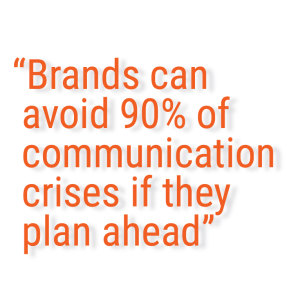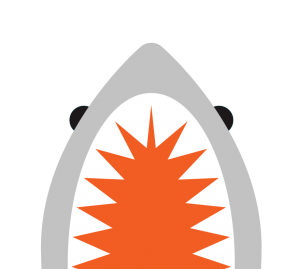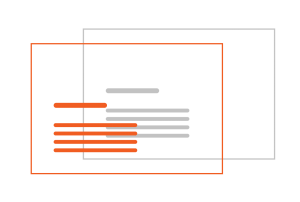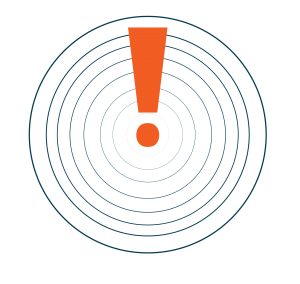As incidents involving data breaches, executive-level scandals and other brand shortcomings regularly turn into national news, the lesson about crisis communication has never been more clear: crisis management requires preparedness and real-time tactics, not a reactive strategy.

The good news, if such a thing exists when talking about crisis, is brands can avoid 90 percent of communication crises if they plan ahead, according to the American Marketing Association. But you still need to ready for the remaining 10 per cent that can strike and irreparably cripple your brand anytime day or night.
No brand, no matter how careful or beloved, has the agility and fortune to avert every fast-spreading, brand-tarnishing crisis. Even a seemingly teflon brand resistant to hashtag hijacking, brand trolls, hackers and employee misconduct could still get roped into industry scandals by association or, as you’ll soon see, bitten by Mother Nature.
Much has already been written about the best ways to plan for a crisis, but this white paper will discuss two overlooked and underutilized real-time tactics you can use when inevitably an unfortunate circumstance puts your brand on the ropes: influencer relations and media intelligence.
Before we dive in, we’ll tell a brief story about the hectic summer of Visit North Carolina, the state's division of tourism, and later show how they used the aforementioned tactics to make it through with limited damage.
Unforeseen Circumstances
“There cannot be a crisis next week. My schedule is already full.”
-- Henry Kissinger
Despite its preparedness and experienced team, Visit North Carolina couldn’t have foreseen the crisis that awaited them in summer 2015.

When Scott Peacock, Visit North Carolina’s public relations manager, checked his buzzing phone while at an out-of-town conference, he learned of two reported shark bites just on his side of the North Carolina-South Carolina border.
North Carolina sees about two shark bites each year, so Peacock didn’t switch to full crisis communication mode immediately. Then, reports surfaced of another bite in the Outer Banks, and soon after four others helped the news go national.
As the media descended, sensationalizing the story and looking for answers, Peacock and the rest of his team followed its crisis communication plan, much of which involved mobilizing its influencers and using media intelligence to inform its strategy as it got in front of the story.
Influencer Relations
“No matter your business, you need a good network and colleagues in the industry who you can rely on to help you because you never know when you will need them.”
-- Scott Peacock, Visit North Carolina
People often believe what they read online, making it essential for brands to disseminate their side of the story during crisis. But before you issue a press release and trot out an executive, consider the mediums and personalities your target audience truly trusts.

For the fifth consecutive year, search engines (63 per cent) and traditional media (58 per cent) are the two most trusted sources for general news and information, according to Edelman’s 2016 Trust Barometer.
However, Edelman also finds a rise in the number of people looking to peers for information. For example, 78 per cent of its survey respondents trust family and friends on social networking and content-sharing sites, but only 49 per cent trust CEOs.
People are naturally skeptical of businesses, and surely that skepticism only rises if a business is in the midst of controversy. This creates the need for brands to have third-party speakers advocate for them.
“A third party speaking on a brand’s behalf immediately injects credibility into the brand’s story,” says Stacey Miller, Cision’s senior communication manager. “Partnering with an influencer who is credible, has experience within the industry and a sizable following provides a trifecta of credibility factors, making it difficult for detractors to make their case.”
Building targeted relationships
The first key to developing relationships with influencers is finding those who have the same or similar audience as the audience you’re trying to reach. While important, the size of their following isn’t the be-all and end-all of influencer relations.
Miller says:
“Your brand’s best influencers are the ones who can make their audiences act on something. Strike a balance by engaging with influencers who have a sizable community and who can compel them to action. If all they do is broadcast, they’re probably not someone who inspires their community to act. To truly understand influencers, you need a media database. The best ones allow you to identify influencers by their topics of coverage, organize them by size of readership or communities and segment those influencers into more distinct topics, enabling you to share different messages with different audiences.”
Returning to our example, Visit North Carolina had its message in a number of local, regional and national outlets but successfully focused on a couple of targeted publications because they aligned with its overall business goals.

In addition to its national reach and a reputation of creating fair and balanced stories, the Washington Post’s primary audience reaches many of North Carolina’s tourists.
Visit North Carolina also targeted National Geographic to provide it some of the data they had collected and to promote messaging that reinforced the science behind the bites.
It’s important to remember that a crisis often shifts your audience. Those interested and influenced by the story may not be the same as those who you typically engage with on an everyday basis, especially if the crisis is growing. This requires identifying the right, not the usual, platforms and influencers to disseminate your story.
Though you always want to team up with your industry’s top thought leaders, you should also aim to identify ones whose very title and position will mitigate damage. For example, North Carolina has a number of credible sources about sharks, but Peacock built and maintained a relationship with an out-of-state shark expert.
“We partnered with this expert because he is knowledgeable, but also because he is from Florida,” Peacock says. “That is just one more way we can keep North Carolina out of the story.”
Aligning messaging

It’s perfectly understandable, especially in times of crisis, that your brand will want to have a specific message and have all communication stick to that script. Scripts, though, are not how influencers built their audiences, and will come off as disingenuous and could potentially exacerbate the issue.
Miller says:
“When reaching out to influencers in times of crisis, don’t ask them to be your shield. Ask for their thoughts, and if their perspective aligns with your brand’s communication, encourage them to become the thought leader of the event. Even if they share something that isn’t overwhelmingly positive, it can have more credibility. A too perfect defense of a brand may come across as dubious.”
If you have built strong relationships with influencers and colleagues, they may approach you to understand how your brand is presenting the story.
With news of the shark bites spreading, a colleague who does public relations for an aquarium approached Peacock after CNN contacted her. Before attempting to set up an interview, she asked how the two could coordinate their message points. Though the interview didn’t work out, the colleague told Peacock who CNN would be speaking with, enabling him to reach out to that person.
Mobilizing influencers
While navigating a crisis, brands want to get ahead of the story. Influencers can help with that, but brands should use caution in how they mobilize them.
Influencers who you engage regularly and have positive relationships with will often want to come to your defense, but you can’t compromise their integrity.
“The brand cultivating influencers with crisis communication in mind should be wary of asking an influencer to go to bat for them,” Miller says. “It has to be organic to combat the crisis effectively and avoid creating more controversy.”

Blatantly asking someone to defend you could backfire, as it could look as if you’re soliciting an overly positive response. Most influencers have built communities by providing engaging, genuine content and thought leadership. If they sense your request threatens that, they won’t help.
In times of crisis, you should seek genuine responses. When you solicit help in handling a crisis, Miller says to make sure you engage with someone with whom you have a strong relationship and whose goals and initiatives you have supported.
Media Intelligence
“Everybody needs context and perspective. Those are the most important things when measuring the impact of a crisis.”
-- Marsha Robie, Cision
Nearly half of communicators (48 percent) feel that social media’s risks outweigh its benefits when it comes to crisis, according to Continuity Insights.

This reticence likely stems from the fact that brands cannot control the message on social. The fear is understandable but shortsighted. Even in times of peace, brands don’t control the message on social. Your fans and detractors and the industry’s influencers do.
Additionally, this lack of control works in your favor if you have the right technology and expertise.
Media intelligence and social listening tools allow crisis-stricken businesses to understand how much the issue truly impacts their brand and informs strategies for mitigating damage.
The key is to monitor the story on social media and on media outlets, says Marsha Robie, Cision’s senior insights analyst.
“If you’re just monitoring press and broadcast, you’re missing so much. That’s just one component,” Robie says. “You have to monitor both the press and social media, and pay particular attention to the intersection of those channels.”
Let’s look at how to use media intelligence to benefit your brand during a crisis:
Understand the impact

As a crisis keeps getting more coverage and mentions, it’s easy to assume that your brand is taking a major hit. But is it really?
A large amount of coverage and tons of mentions about a topic don’t mean your brand is sinking. On the other hand, a small amount of coverage and few mentions doesn’t mean your brand has escaped unharmed.
“The key is understanding how much your brand is being mentioned and what exactly is being said about it,” Robie says. “You want to understand how much a crisis is getting talked about in social media and how much of that is people saying, ‘I’m not going to do business with this company.’”
In the case of Visit North Carolina, media coverage and social media discussion about “shark attacks” rose significantly after the bites, but North Carolina’s beaches weren’t being singled out.
Only 6 percent of mentions of shark attacks also included North Carolina, and only 7 per cent of stories about visiting or vacationing in North Carolina mentioned shark attacks. Though both numbers were higher than anyone at Visit North Carolina wanted, it gave context to how much damage the crisis was doing.
In fact, through the use of Cision Global Insights, Visit North Carolina found that although the press sensationalized the issue, conversation on social media was thoughtful. Discussion centered on how swimmers invaded the shark’s backyard, showing Visit North Carolina that people weren’t directing blame at any one person or organization.
“Being able to step back and look at it in context makes a big difference,” Peacock says.
The benefit of media intelligence solutions and expert third-party analysts, like those Cision offers, Robie says, is that a neutral party outside your organization gives you a reality check on how much the crisis is actually impacting your brand.
As the crisis progresses or dissipates, you will want to keep altering the terms you monitor for, while still paying attention to how they impact your brand.
As Peacock says, “If you’re only playing in the shark attack sandbox, of course it’s going to be bad all the time.”
However, evolving the searches to include more keywords and relating those searches directly to North Carolina showed that the crisis had no negative economic impact. They didn’t have any record of people swearing off North Carolina as a vacation destination or canceling their trips because of the shark incidents, Peacock says.
Inform strategy

No two crises are exactly the same, but a situation your brand or another went through previously can provide a rough guideline of what to expect and a means of providing context to stakeholders.
For example, if you see that a similar crisis a competitor dealt with died down after 24 hours, you may want to wait it out. “Sometimes you do not want to throw fuel on the fire,” Robie says.
“Sometimes you just want to let it lay, and media intelligence can provide an idea of when to do that.”
Peacock, for example, didn’t encourage his local tourism partners to get in front of news cameras to discuss the problem once he realized that much of the conversation around shark attacks didn’t involve North Carolina’s beaches.
Additionally, real-time data could show which of your competitors are avoiding significant fallout from a crisis. What can you learn from the actions they have taken to mitigate the crisis? Are they using or avoiding specific platforms? What does their messaging look like?
Copying a competitor’s successful strategy in its entirety won’t work because they have unique strengths, weaknesses and style, but you can adopt some of the ideas that helped them lessen the impact of a crisis.
“Crises are always bad stories, but you can show stakeholders it could have been worse and show how your crisis mitigation strategy is paying dividends,” Robie says. “There is significant value in being able to identify how the conversation shifted after you took action.”
Data itself is neutral. It’s not prone to overreaction. For this reason, it’s extremely useful for informing your crisis communication strategy.
Conclusion
“In the moment of crisis, the wise build bridges and the foolish build dams.”
-- Nigerian proverb

The time to prepare for a crisis is before one even begins developing. But no matter how much you safeguard your brand and have processes in place to mitigate crisis, you need to make sure you have the right tools and tactics to navigate your brand's way through any crisis.
The real-time opportunities provided by properly using influencers and media intelligence will help you reduce the negative impact to your brand during crisis, understand the severity of a crisis and return you to your regularly scheduled communication.